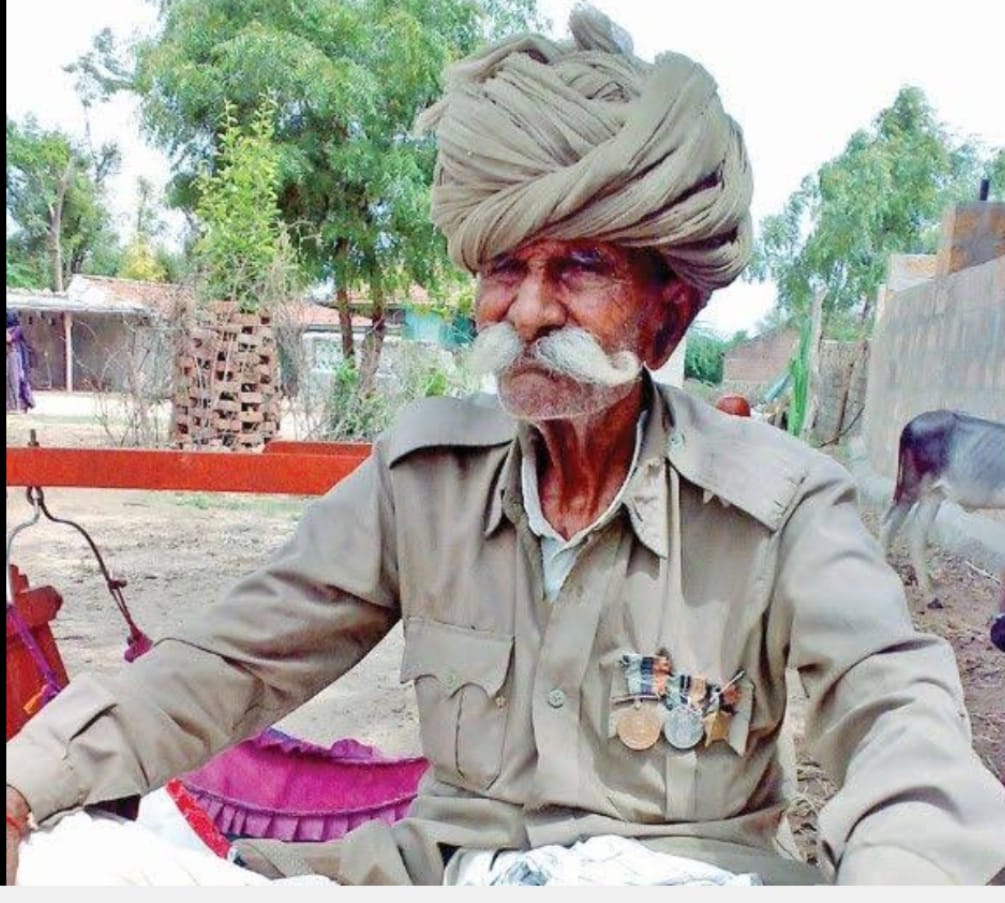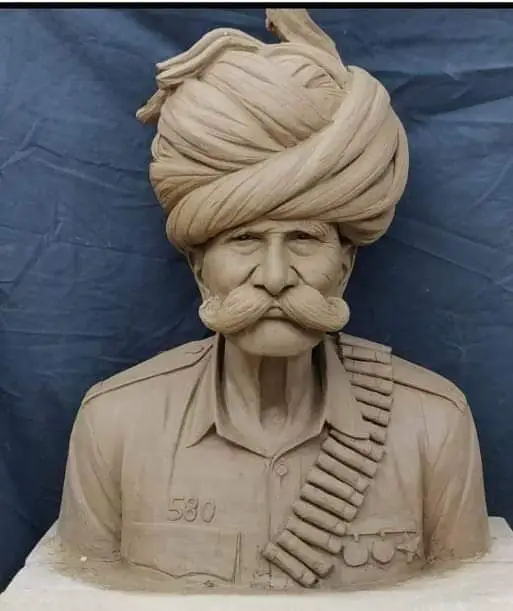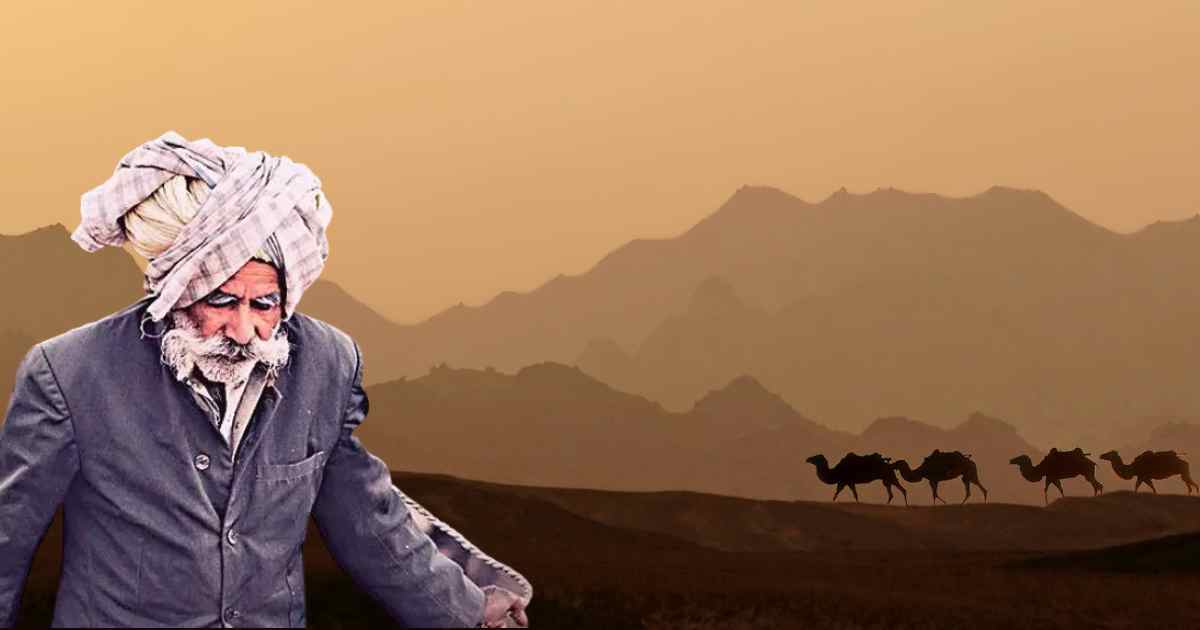“Explore the fascinating story of Ranchhod Pagi, the hero of Gujarat. Learn about his statue, picture, age, death, and village in this comprehensive guide. Discover his impact on the Indian army and his legacy in Indian history.”
The recently released Hindi film ‘Bhuj: The Pride of India’ tells the heroic story of Ranchhod Pagi, also known as the ‘Pride of Gujarat.’ Ranchhod Rabari used his resourcefulness to assist the Indian army in the desert. Due to his actions, Pakistan even announced a bounty of 50,000 rupees on his head.”
Uncover the Life and Legacy of Ranchhod Pagi: A Comprehensive Profile and Family History”
| Real Name | Ranchoddas Rabari |
| Nice Name: | Ranchoddas Pagi |
| Birth Date: | About 1901 |
| Birth Place: | Pethapur – Gadhada (Now Pakistan) |
| Father’s name: | Sawabhai |
| Mother’s name: | Nathiba |
| Wife Name: | Sagnaben |
| Children Name: | Madevbhai and Lakshmanbhai two sons and two daughters |
| Death | 17 January 2013 (Limbala Village , Vav Taluka , Banas Kantha District Gujarat) |
| Prize/Award | Sangram Medal, Police Medal and Summer Service Star awards |
“Ranchhod Pagi was a native of the Banaskantha district of Gujarat, born in Pethapur Gaddo, a small village in Tharpakar, Pakistan. His mother’s name was Nathiba and his father’s name was Savabhai, who passed away at a young age. Ranchhod was raised by his mother and had a happy family in Pakistan, owning 300 acres of land and over 300 animals, such as cows, sheep, goats, and camels. He employed 20 to 25 men in his household, many of whose descendants now live in Shivnagar village in Tharad.
Ranchhod Pagi History
In 1947, during the partition of India and Pakistan, Ranchhod and his family, tired of being tormented by Pakistani soldiers, tied up four Pakistani policemen and fled to India with their entire family and cattle. In 1950, they settled in Raghanesada village in Gujarat and later established a permanent residence in the village of Mosal Limbala.
Many people from Pakistan continued to come to India for several years after the partition, with many settling permanently in Tharad, Vav Panthak, and Kutch in Gujarat. During the 1965 and 1971 Indo-Pakistani Wars, Ranchhod helped the Indian Army greatly by releasing six Pakistani soldiers. “

Ranchod Pagi was renowned in the area for his ability to determine the number of people and their weight simply by observing their footprints. He lived in a remote village of Kutch-Banaskantha, where the land was so flat and vast that one could see for miles in every direction.
Ranchhod Rabari mastered the unique art of determining the number of individuals and their weight from their footprints. He was a cattle rancher and this skill eventually made him a valuable asset to the Indian Army. In 1965, when Pakistan occupied parts of Kutch, the Indian army faced difficulties in finding their way. Ranchhod Pagi stepped in and led the army through a shorter and safer route in the desert. During this time, he also tracked down and captured around 1200 hiding Pakistani soldiers. This incident solidified his place as a trusted ally of the Indian Army.
Career as a Pugi
In 1962, at the age of 58, Ranchhod Pagi was appointed as a Pugi in the Suigam police station by the Banaskantha Police Commissioner Vanraj Singh. He was so skilled in reading footprints that he could even tell how many individuals were riding on a camel by just observing its tracks. He was capable of estimating everything from weight to age from human footprints, and could provide precise information about how long ago the marks were made and how far the individuals had traveled.
“During the 1971 war, the Indian Army faced difficulties in delivering weapons and rations due to heavy shelling from Pakistan. General Sam Maneksha sought help from Ranchhod Pagi, who was knowledgeable about the desert. Ranchhod Pagi established a supply line for the Indian army through the short roads of the desert region by deploying Adingos near the Palinagar check post. He personally brought ammunition from another camp located far away on camels and delivered it to the army, enabling Indian Air Force fighter jets to capture Dhora and Bhalwa bases. Ranchhod Pagi’s timely delivery of ammunition earned him the title of ‘one man army at the desert front’ from General Maneksha, who trusted him deeply.
During the 1971 war, when General Sam Maneksha organized a grand victory party in Delhi to celebrate Pakistan’s defeat, Ranchod Pagi was invited. He brought bread, dry red chillies, and onions with him.
On the way, Sam Maneksha sent a helicopter to pick them up, but while boarding the helicopter, their food packets were left on the ground. The helicopter was sent back down to retrieve them.
When military officials asked why they brought all of this food, since there would be many dishes served at the party, Ranchod Pagi replied, “I like this food.” To everyone’s surprise, he left the party delicacies and sat down to eat roti, chillies, and onions from the food he had brought. Seeing this, Maneksha also ate bread and onions from Ranchod Pagi’s house.
Cattle herders living in the desert must follow the footsteps to find their lost cattle. Ranchod Pagi had become skilled at distinguishing tracks from an early age. He could also tell the time of a step by the depth of the footprints in the desert sand. While explaining this art to the officers of the Indian Army, he differentiated several steps and explained that there are three types of steps. Big strides belong to men; they are slightly deeper and inclined to the right, indicating that he is carrying weight on his head. The footprints of a child and a woman are also distinct. A woman’s steps are slightly skewed from right to left, indicating that she is pregnant. When the officials checked in a nearby kasba, they found a herding family with a pregnant woman who had actually passed by.
Ranchhod Pagi Death
Ranchhod Pagi was born in 1901 and passed away in 2013 at the age of 112 years. He held the coat and medal given to him by the Indian Army as a badge of honor, but had no sense of pride for the great work he had accomplished. His sons and grandsons also serve in both the Indian Army and the Police Force.
ranchhod pagi statue
One of the ways that Ranchhod Pagi’s legacy is remembered is by a statue of him that was installed in a border post of Suigam in Banaskantha district of Gujarat, at the international border region of North Gujarat. This was the first time that an army post was named after a common man as well as a statue of his was installed. The statue depicts Ranchhod Pagi in his traditional attire, holding a stick and a bag, with a proud and confident expression on his face. The statue was inaugurated by the then Chief Minister of Gujarat, Narendra Modi, in 2008. The statue is a symbol of Ranchhod Pagi’s courage, loyalty, and contribution to the nation.
Prize/Award:
India’s Border Security Force (BSF) has named one of its outposts after Ranchhod Pagi, in his honor. A statue has also been erected at the outpost to commemorate his contributions. He was honored by both the police and the Border Security Force for his services. He was awarded the Sangram Medal, Police Medal, and Summer Seva Star awards. In 2007, Gujarat Chief Minister Narendra Modi honored him at the Independence Day function held in Palanpur.

He died on January 18, 2013, at the age of 112. Ranchodbhai Pagi Rabari’s last wish was to have his turban on his head during his funeral and to be cremated in his own farm. His cremation was done in accordance with his wish.
Salutations to this heroic son who, despite not being in the army, dedicated his entire life to protecting Mother India like a brave soldier in the wilderness.
Also read this:-
- Introduction to Sant Kabir Sahib
- Biography of Saint Tukaram
- Information about Narsingh Mehta
- Swami Vivekananda Life and Message
I hope you have liked our Ravi shankar Maharaj Biography in English article very much. We will continue to publish interesting information about the biographies of such great people on our blog. If you have learned something new and found this article useful, don’t forget to share it with your friends. Your comments, likes, and shares motivate us to write new information.

Thank you for the detailed information on Ranchoddas Pagi ….. keep up the good work .